python程序如何与html联动(小白入门教程)宝塔面板(后端python,前端html,如何实现联动?)
后端python,前端html,如何实现联动?
今天我作为技术小白,讲解一下成功案例。
背景
为了平时收集sitemap(网站地图)比较方便,突发奇想,编写一个生成sitemap的程序。
案例
sitemap网站地图生成器
本案例,采用flask框架进行网站搭建。
1.准备源码文件
宝塔面板:9.4.0
文件路径结构:
项目文件夹
├─ app.py
└─ templates
└─ index.html
文件级,总共用到两个文件,app.py和templates/index.html(注意app.py和templates是平级)。
前端代码(templates/index.html):
<!DOCTYPE html>
<html lang="zh-CN">
<head>
<meta charset="UTF-8">
<title>Sitemap 生成器</title>
</head>
<body>
<h1>Sitemap 生成器</h1>
<form method="post" action="/">
<label for="url">请输入网址:</label><br>
<input type="text" id="url" name="url" required><br>
<input type="checkbox" id="include_subpages" name="include_subpages"> 包含子页面<br>
<input type="submit" value="生成 Sitemap">
</form>
</body>
<!-- Matomo -->
<script>
var _paq = window._paq = window._paq || [];
/* tracker methods like "setCustomDimension" should be called before "trackPageView" */
_paq.push(['trackPageView']);
_paq.push(['enableLinkTracking']);
(function() {
var u="//tongji.7hl.cn/";
_paq.push(['setTrackerUrl', u+'matomo.php']);
_paq.push(['setSiteId', '3']);
var d=document, g=d.createElement('script'), s=d.getElementsByTagName('script')[0];
g.async=true; g.src=u+'matomo.js'; s.parentNode.insertBefore(g,s);
})();
</script>
<!-- End Matomo Code -->
</html>PYTHON代码(app.py):
from flask import Flask, render_template, request, send_file
import requests
from requests.exceptions import RequestException
from bs4 import BeautifulSoup
import tempfile
import uuid
import os
from urllib.parse import urljoin
import validators
app = Flask(__name__)
def get_all_links(url, include_subpages=True):
all_links = []
try:
response = requests.get(url)
response.raise_for_status() # 检查响应状态码,如果不是 200 会抛出异常
soup = BeautifulSoup(response.text, 'html.parser')
links = [link.get('href') for link in soup.find_all('a')]
absolute_links = [urljoin(url, link) for link in links if link]
all_links.extend(absolute_links)
if include_subpages:
for link in all_links.copy():
if link.startswith(url):
try:
subpage_response = requests.get(link)
subpage_response.raise_for_status()
subpage_soup = BeautifulSoup(subpage_response.text, 'html.parser')
subpage_links = [sub_link.get('href') for sub_link in subpage_soup.find_all('a')]
subpage_absolute_links = [urljoin(link, sub_link) for sub_link in subpage_links if sub_link]
all_links.extend(subpage_absolute_links)
except RequestException as e:
print(f"请求子页面 {link} 时出错: {e}")
except RequestException as e:
print(f"请求 {url} 时出错: {e}")
return all_links
def generate_sitemap(links):
xml = '<?xml version="1.0" encoding="UTF-8"?>\n'
xml += '<urlset xmlns="http://www.sitemaps.org/schemas/sitemap/0.9">\n'
for link in links:
xml += ' <url>\n'
xml += f' <loc>{link}</loc>\n'
xml += ' </url>\n'
xml += '</urlset>'
return xml
@app.route('/', methods=['GET', 'POST'])
def index():
if request.method == 'POST':
url = request.form.get('url')
if not validators.url(url):
return "输入的网址无效,请重新输入。"
include_subpages = request.form.get('include_subpages') == 'on'
links = get_all_links(url, include_subpages)
sitemap_xml = generate_sitemap(links)
# 创建临时文件保存 Sitemap
temp_file = tempfile.NamedTemporaryFile(delete=False, suffix='.xml')
try:
temp_file.write(sitemap_xml.encode('utf-8'))
temp_file.close()
return send_file(temp_file.name, as_attachment=True, download_name=f'sitemap_{str(uuid.uuid4())}.xml',
mimetype='application/xml')
finally:
os.remove(temp_file.name) # 确保文件在使用后被删除
return render_template('index.html')
if __name__ == '__main__':
app.run(debug=True)2.宝塔创建python项目
1)新建python项目
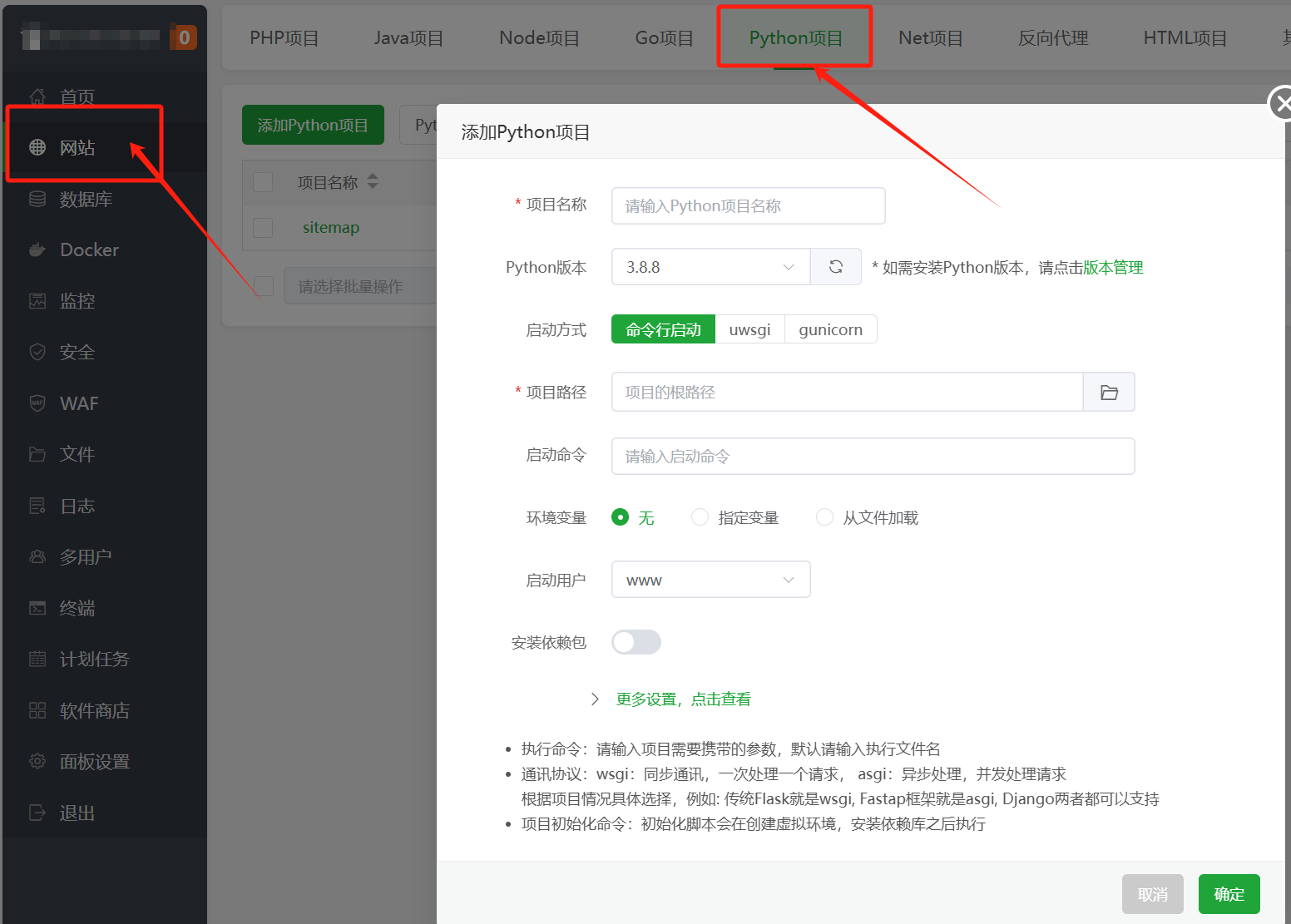
2)设置启动方式
设置启动方式“gunicorn”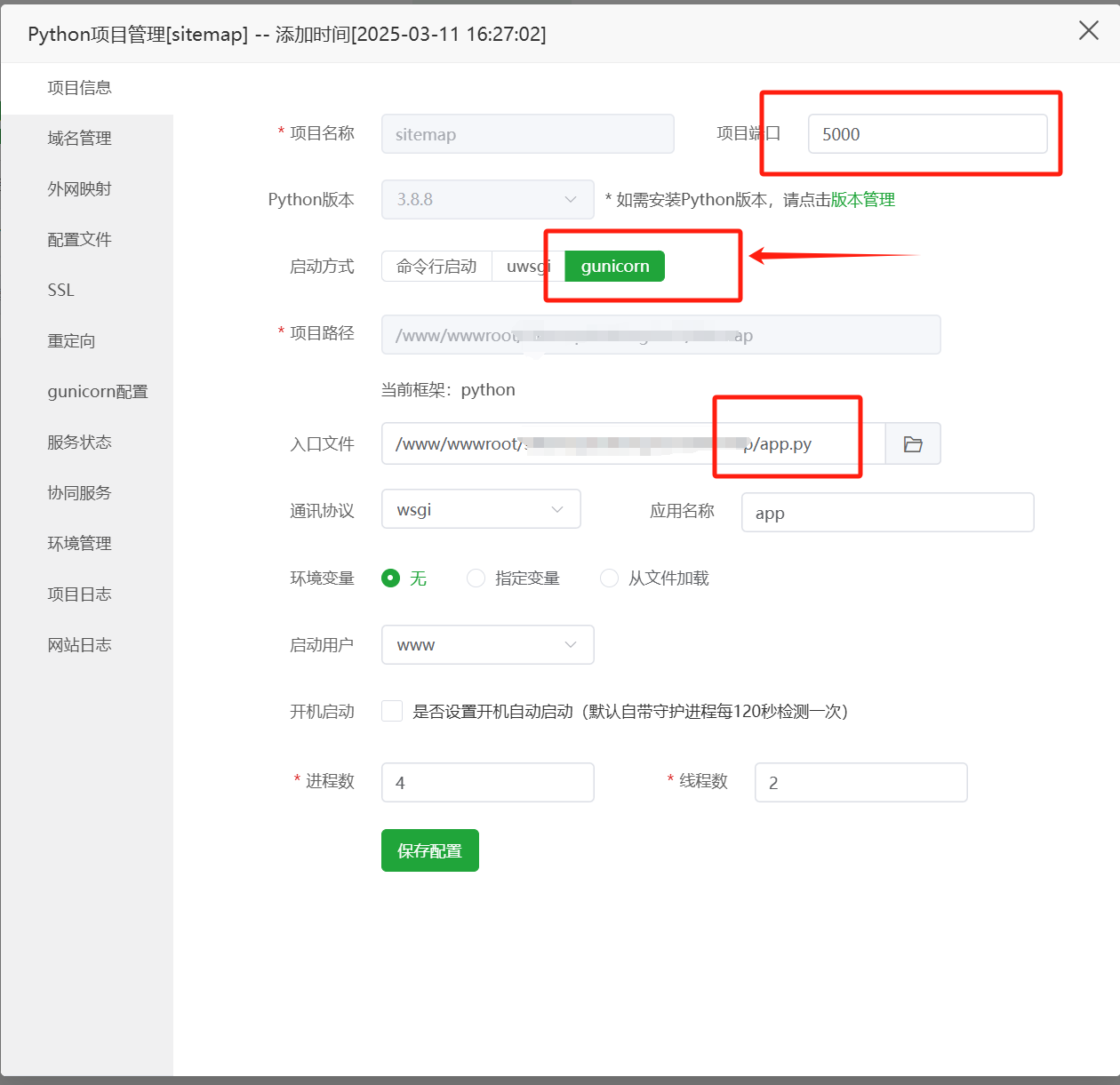
3)安装模块(依赖包)
安装以下模块(依赖包)
Flask, render_template, request, send_file,RequestException,BeautifulSoup,tempfile,uuid,os,urljoin,validators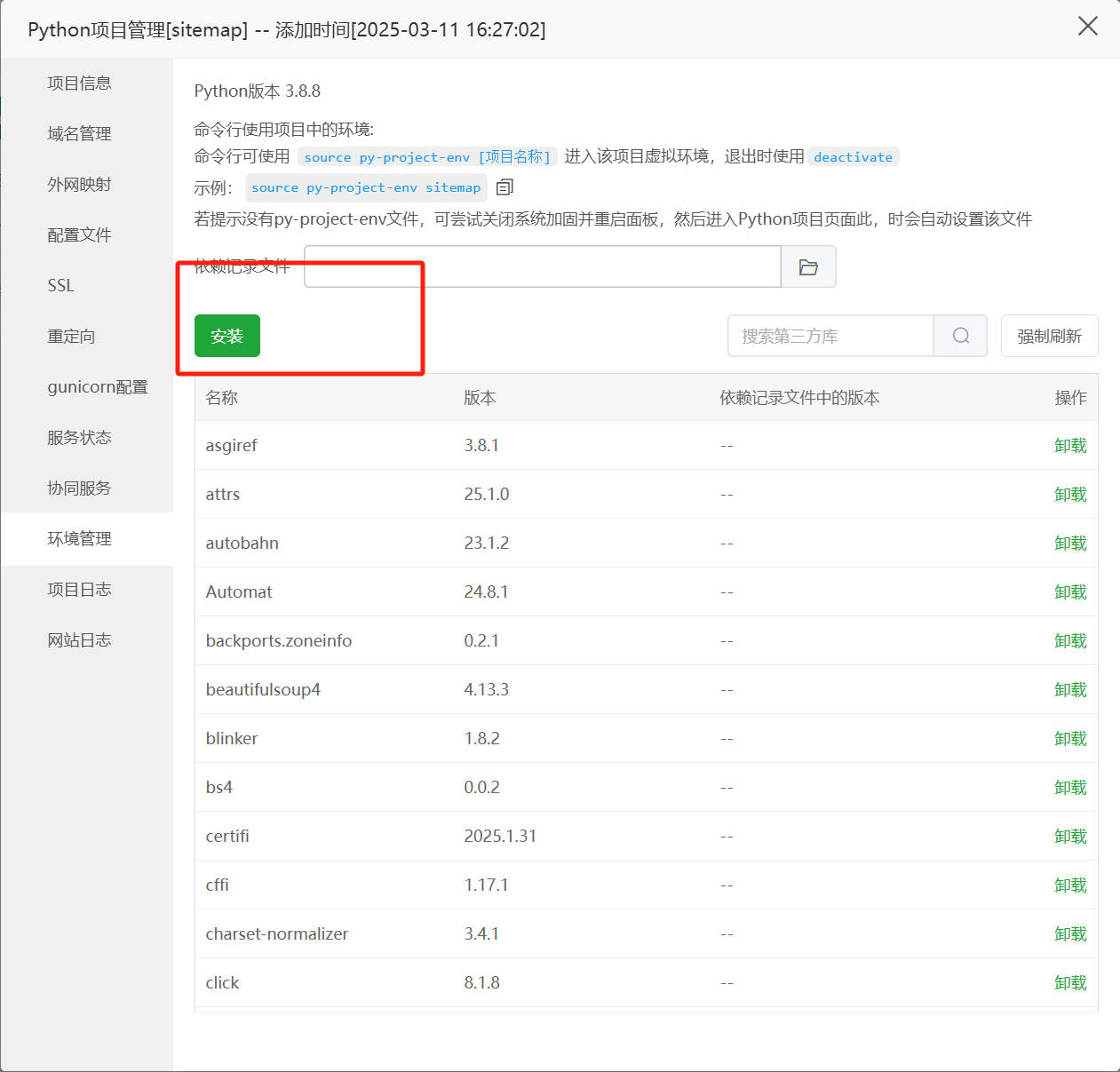
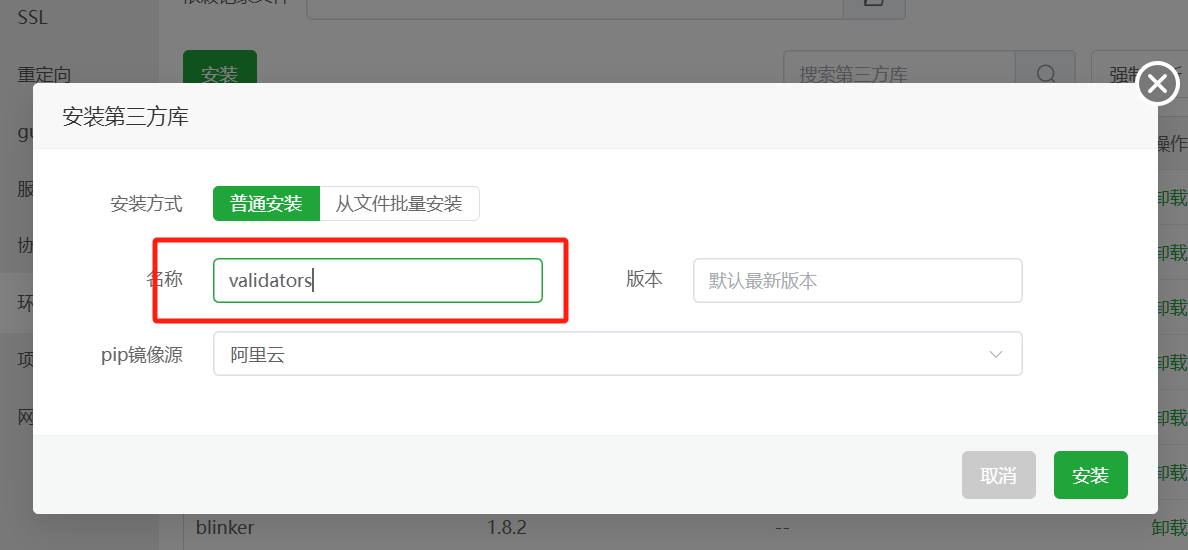
点击安装。
4)启动项目
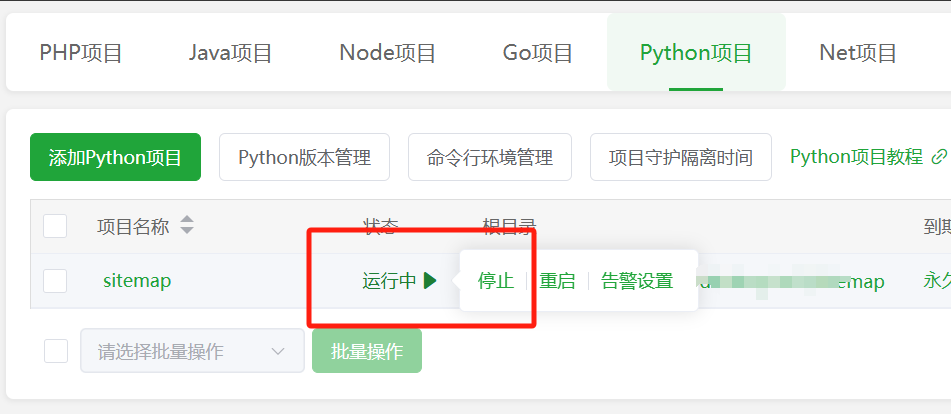
成品效果
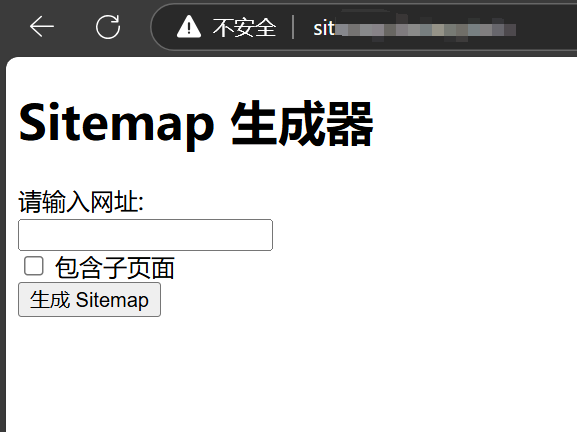
点击“生成Sitemap”后,等待生成结果,自动下载sitemap.xml文件。
版权申明
文章由大象博客原创,转载引用需注明出处:大象博客(https://daxiang.tech)



暂无评论数据